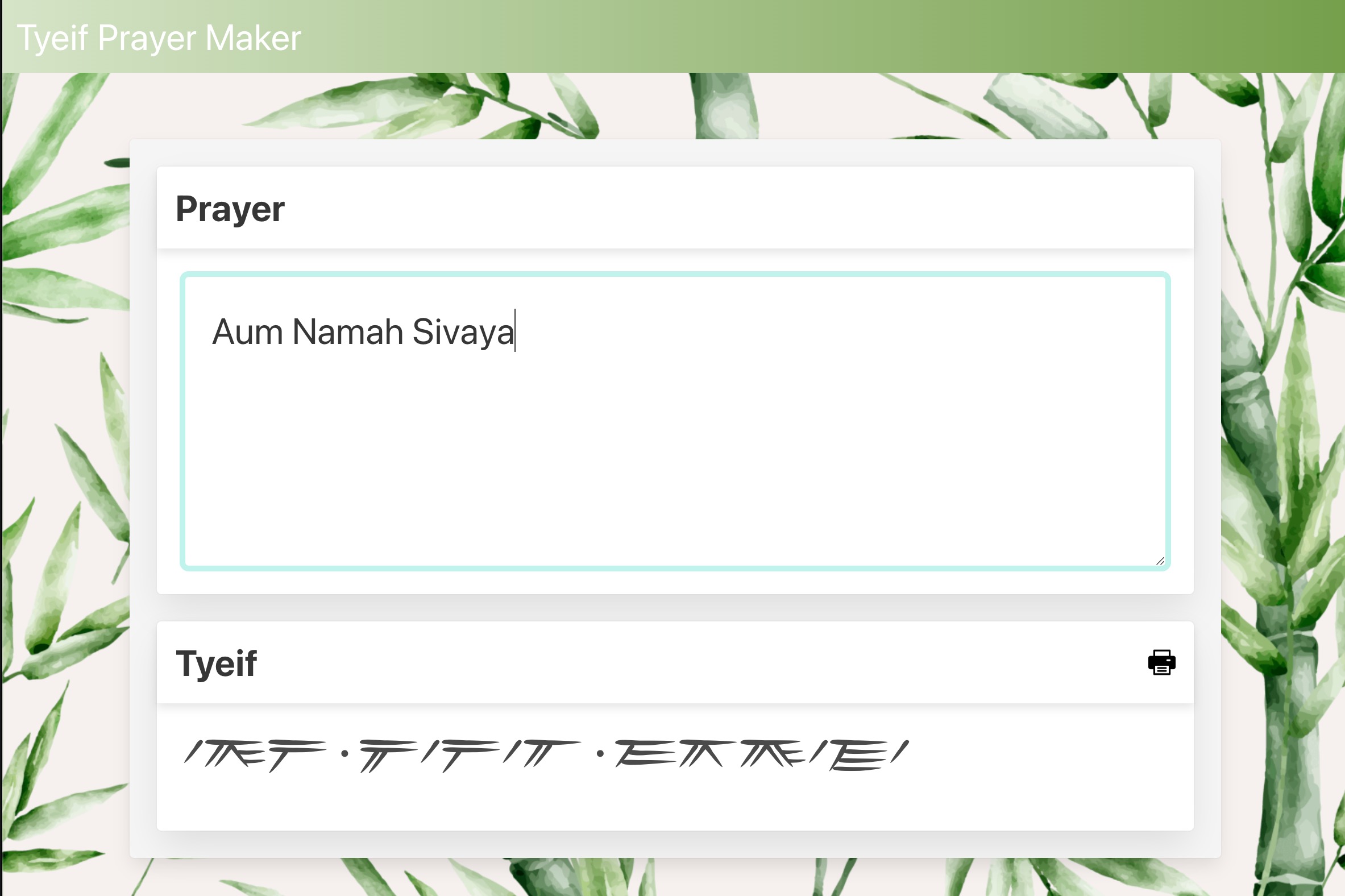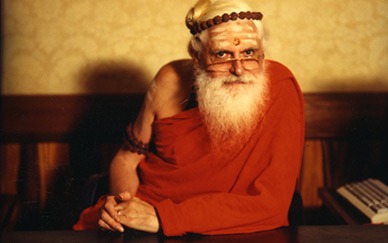April 2023 Gurudeva Chitra Padapuja
"All things in life must be centered around religion. Only the spiritual matters of life live on. Everything else in life is destined to perish. This body will perish. This personality will perish. But our religion will live on and grow inside of us as we evolve from life to life. It is the duty of each Hindu, young or old, to help the religion progress from generation to generation. We help Hinduism live on by serving and guiding others. For true and lasting happiness, religion must be the basis of everything in life, around which all other interests and desires revolve. So many people are against religion these days. It is up to religious people to make it popular again."
Iraivan Temple Crystal Sivalinga Installation livestream highlights
Cartoon Challenge

For fun, we are soliciting ideas for captions for this cartoon of a hermit atop a remote hilltop cave approached by a determined seeker after Truth. CyberCadets can send your caption ideas (as many as you like) to sada@hindu.org. One will be chosen to be published in a future edition of Hinduism Today magazine. No names will be used, so it's anonymous.Get ready to flex those funny muscles and show off your wittiness!
Loving Ganesha in Russian Language

The amazing team in Moscow just yesterday released their full-color edition of the 800-page book Loving Ganesha.
This is the same team that has published Gurudeva's entire trilogy and also translates, prints and distributes the Russian edition of Hinduism Today. How they accomplish such amazing things in the midst of historic challenges it a small miracle. Clearly their work is uplifting the Russian-speaking world.
We offer here Gurudeva's original Dedication at the front of the book:
IT WAS NOT SO LONG AGO that seekers requested that we publish more about this mystical God, most beloved of them all. So we did. Now, into your hands we present a lovable Loving Gaea. Why did we choose that name of all names? Because everyone, young and old, thin and hefty (especially the latter) loves Gaea. Of course, He loves us all very, very much. He is the God of unfailing laws, such as gravity, retribution and karmic responses. In matters of less gravity, He is the lover of all things sweet. He is also the Prince of Culture and Patron of the Arts. Everyone loves music, art, drama and the dance.
He, in His joyous ponderousness, is the Remover of Obstacles, and that is just what He did for us--removed the obstacles we faced in publishing Loving Gaea, and in producing this third edition, and those you faced in finding it. Many months of research and effort went into this gem. Help was given by mahadpatis, chryas, swms, pandits, "Gaeologists," Sanskrit scholars, brahmachrs, brahmachris, housewives, husbands and children, experts in all fields of knowledge about Hinduism's elephant-faced Lord, to be worshiped first before starting any quest.
This book is lovingly dedicated to my satguru, the venerable sage of Sri Lanka, Satguru Yogaswami, whose ashram in Colombuthurai rested across the road from the Varasitthi Vinayagar Temple in the northern Tamil domain. May Loving Gaea bring to you a deeper, subtler appreciation of Hinduism--the venerable Santana Dharma.
A New Web App for Tyeif Script!
 https://tyeif.com/
https://tyeif.com/
Aum Namah Shivaya
After reading an inspiring Master Course lesson, Mahesh Sundaram coded and produced this wonderful little app for transcribing English into the tyeif script for prayer writing to the Devas. Give it a try!
Lesson 321 – Living with Śiva The Bamboo Tyēīf Font Several years ago we created a Tyēīf font for the computer, to make it easy to write legible prayers in Tyēīf. It is good for your powers of concentration to learn to read the Tyēīf script, but if you are using a computer, this is not really necessary, unless you want to write Tyēīf by hand, which many do. The easiest way to compose your prayer on a computer is to type in an English font, such as Geneva, and then select the text and change it to the Tyēīf font. Prayers written in Tyēīf have built-in confidentiality. You might leave a prayer to the devas on your desk. As few people read the Tyēīf script readily, confidentiality is ensured. ¶Should you be traveling and not have your computer with you, you can always write your prayers in Tyēīf the old-fashioned way, by hand. It is artistic to use a soft flow pen, and even more artistic to use a Japanese ink brush. If you want to be really modern, use a black, sharp-pointed pen. The Tyēīf script looks good coming from whatever plume you choose. Many devotees enjoy writing Tyēīf by hand in vertical columns from top to bottom. When writing by hand, this is quite acceptable. Always use black ink, never colors. Black translates to white or gray in the inner world, where the prayer appears reversed. The paper that is white becomes black, and the letters that are black become white. It is only by two or three devas holding it and putting their prāṇas into it that the prayer again becomes black on white as it appeared when it was sent. They do this only when they want to keep the document to study it. Many prayers are so simple that they can be easily memorized as they appear on the black background in white ink, and it is not worthwhile energizing them into a durable form. ¶If you use colored paper and colored ink in writing your prayers, your words could be unreadable, even using the Tyēīf script. Colored paper appears dark purplish-blue in the inner world, somewhat like the ashes of burned paper, still intact, but barely legible, ready to disintegrate at the first touch. Therefore, just sit down and write your prayer in Tyēīf with a black pen on white paper. ¶Typed documents—on one side of the page only—are acceptable and easily read in the inner world, as long as the size of the type is not too small. Typewritten prayers (again, on one side of the page) in English or any language are also acceptable to the devas, as are hand-printed prayers that are written with well-rounded, clearly formed letters. Be sure to sign the prayer and also include the date. ¶The writing of prayers can be done in several ways. Each devotee can write his or her own prayer about personal questions, needs or problems. One can pray for another person, for a group of people, or for a situation to clear up within a group or community, even for solutions to national or world problems. Every prayer received is answered in some way, however mysterious. Not one is neglected, ever. ¶The Gods and devas look very carefully into the karma of the devotee before taking any action. Because of this, it is always best to describe two or more alternatives that you would be satisfied with in each prayer, rather than insisting on only one solution. This is because your first preference may not be possible in your karmic pattern or, without your knowing, it may actually be the worst possible thing that could happen to you. In this case, your prayer would be answered with a non-answer. Therefore, it is wise to suggest two or more alternatives when making a request. For example, in seeking help in finding employment, you might suggest three places you would be content at, indicating first choice, second and third.
Iraivan Temple Gallery

Jai Mahalingeshwara
Please enjoy this gallery featuring the awe-inspiring twin temples of Kauai's Hindu Monastery: the Kadavul Nataraja Siva Temple and the Iraivan Temple on San Marga. Nestled within the monastery's property and within walking distance of each other, these temples are a testament to the beauty and grandeur of Hindu architecture and spirituality.
Publisher’s Desk – Virtual Reality
Satguru's latest Publisher's Desk editorial, from the April/May/June, 2023 issue of Hinduism Today Magazine
"It’s no secret that today’s youth have a deeper interest in all things digital than previous generations. As digital experience proliferates and grows more realistic and compelling, it is entirely possible that its proper use could serve to deepen the younger generations’ understanding of and interest in Hinduism’s perspective of the Deities and inner worlds. I have asked, “Can the experience of non-physical digital worlds help youth understand and appreciate the non-physical spiritual worlds?” To explore this, we need to look at the major digital trends..."
Iraivan Temple Mandala Pujas
Iraivan Temple Sphatika Sivalinga Placement

Subramuniya Mandapam Kumbhabhishekam
While Iraivan Temple was concluding its kumbhabhishekam events, another auspicious installation was happening in northern Sri Lanka. The recently completed Subramuniya Mandapam in Alaveddy received its kumbhabhishekam, performed by Sri Prasanna Kurukkal from Nallur Temple.
Gurudeva lived on this land when it was the home of a Yogaswami devotee. The home was later removed and a small Siva Temple built. The lingam from that temple is now the center murti of the Subramuniya Mandapam. So the land has gone from a devotee’s home, to a Siva shrine, to a meditation pavilion holding the murtis of four of our historical satgurus.
For background, here are the recollections of Kandiah Chettiar’s daughter-in-law: "When my father-in-law—who was staying with Robert at the Colombo YMCA and was impressed with his steady morning devotions—wrote home to inform the family that he would be bringing a young American to our home, all were horrified. The home was too humble. To prepare for the guest, we decided that the family would move out of the house and give it entirely to Robert for his stay.
"Upon his arrival we were astonished to see his great height. He was so tall he couldn’t stand upright except in the very center of the house! After some hours, he was very close with us—like a brother to my husband. That evening my father-in-law took him to the Ganesha Temple. The priest asked his name, and my father-in-law said, 'Thamby. We just call him Thamby ["young one"].' He made everyone so comfortable, like part of the family; we all stayed in the house."
From Our Gurus' Teachings
Archives are now available through 2001. Light colored days have no posts. 1998-2001 coming later.

